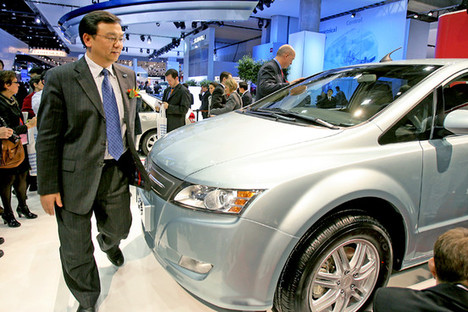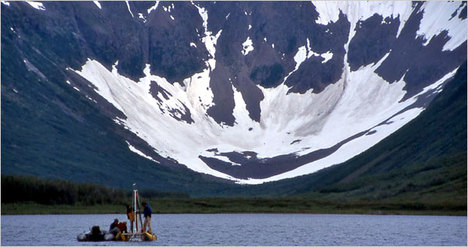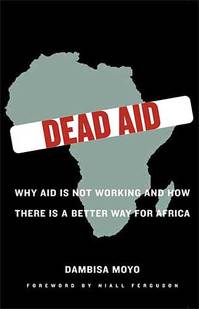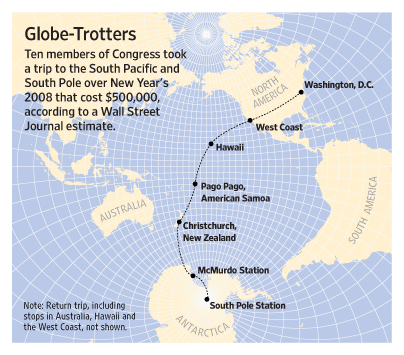 “Wang Chuanfu, the chairman of Chinese auto maker BYD, with one of the company’s cars at the automobile show in Detroit in January.” Source of photo and caption: online version of the WSJ article quoted and cited below.
“Wang Chuanfu, the chairman of Chinese auto maker BYD, with one of the company’s cars at the automobile show in Detroit in January.” Source of photo and caption: online version of the WSJ article quoted and cited below.
(p. B5) XIAN, China — BYD Co., the Chinese auto maker part-owned by Warren Buffett’s company, is finalizing plans for an all-electric battery car that would be sold in the U.S. next year, ahead of the original schedule, Chairman Wang Chuanfu said.
. . .
One source of Mr. Wang’s confidence in attacking the U.S. car market is BYD’s ties with MidAmerican Energy Holding Co., the unit of Mr. Buffett’s Berkshire Hathaway Inc. that paid about $230 million for a 9.9% stake in BYD.
MidAmerican Chairman David Sokol, who was also interviewed in Xian, said MidAmerican is ready to assist BYD’s foray into the U.S. auto market in “any way we could be helpful.” MidAmerican also might invest in BYD’s new initiatives in the U.S., which, in addition to automobiles, could involve solar panels and battery technology for power utilities.
Mr. Sokol also said MidAmerican hopes to boost its BYD stake if the chance arises. “If in the future there is an opportunity for us to continue to invest in BYD, we will be happy to increase our stake over time, but we will do it in cooperation with BYD,” he said. Mr. Wang said an increase is “negotiable.”
For the full story, see:
NORIHIKO SHIROUZU. “BYD to Sell Electric Car in U.S. Market Next Year.” The Wall Street Journal (Sat., AUGUST 22, 2009): B5.
(Note: ellipsis added.)








